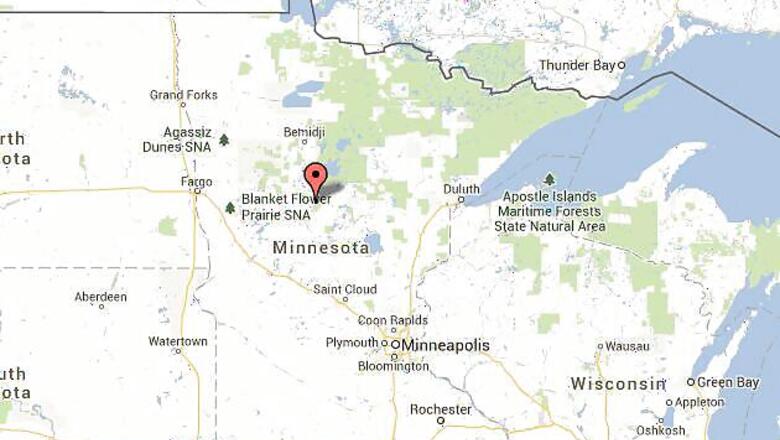
views
The world's oldest-known wild black bear has died of old age - at 39 and a half years - in northern Minnesota.
The decomposed body of the female American black bear was found last week in the Chippewa National Forest near Marcell in Itasca County.
Data from the animal, known as Bear No 56, and her offspring have contributed significantly to the scientific literature on black bear biology, according to the Minnesota Department of Natural Resources (DNR).
The bear was first captured and radio-collared in July 1981 by DNR scientists during the first summer of a long-term research project on bear population ecology.
The bear was 7 years old at the time and was accompanied by three female cubs.
During a 32-year study period, the bear and her many offspring provided an almost uninterrupted record of reproduction, survival, movements and eventually, senescence (ageing), within a single matriarchal lineage, a DNR statement said.
Bear No 56 outlived by 19 years all of the 360 other radio-collared black bears that DNR researchers have followed since 1981. She also outlived any radio-collared bear of any species in the world.
Only a very few individual study bears have been reported to reach age 30. The second-oldest was a brown bear that lived to 34.
Researchers suspect the key to the bear's longevity was a combination of factors, including the location of her home range in a forested area with few people or major roads; a more reticent nature than that of many bears, in terms of her avoidance of people; and luck.
In the last few years of her life, the bear began to visit some hunters' baits, but hunters passed up shooting her, abiding by a DNR request that hunters not shoot collared bears.
When last handled in March 2010, she was a healthy weight but her teeth showed excessive wear and her eyes were clouding. Since then, her hearing and eyesight continued to deteriorate.
Sometime in July this year, the animal left her normal home range, as bears often do in late summer, to explore other areas for rich food sources on which to fatten for winter.
After locating her radio signal several miles from her typical home area, DNR bear researcher Karen Noyce found her decomposed body in a secluded wooded location.
From all indications, she died a quiet death, with no sign of struggle at the site and no evidence of broken bones or traumatic injury.




















Comments
0 comment